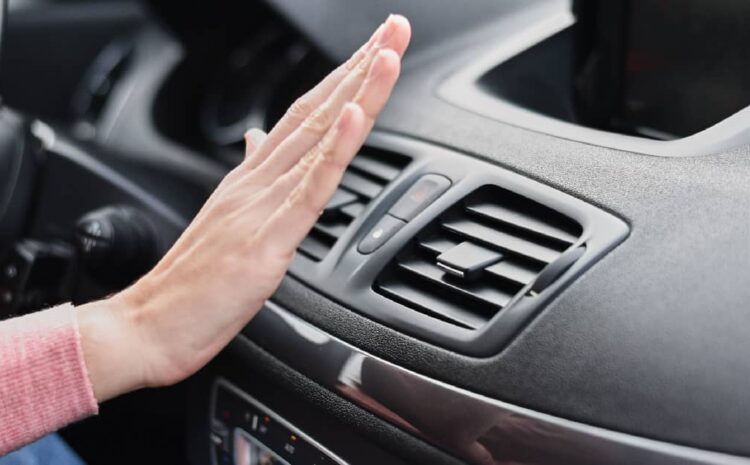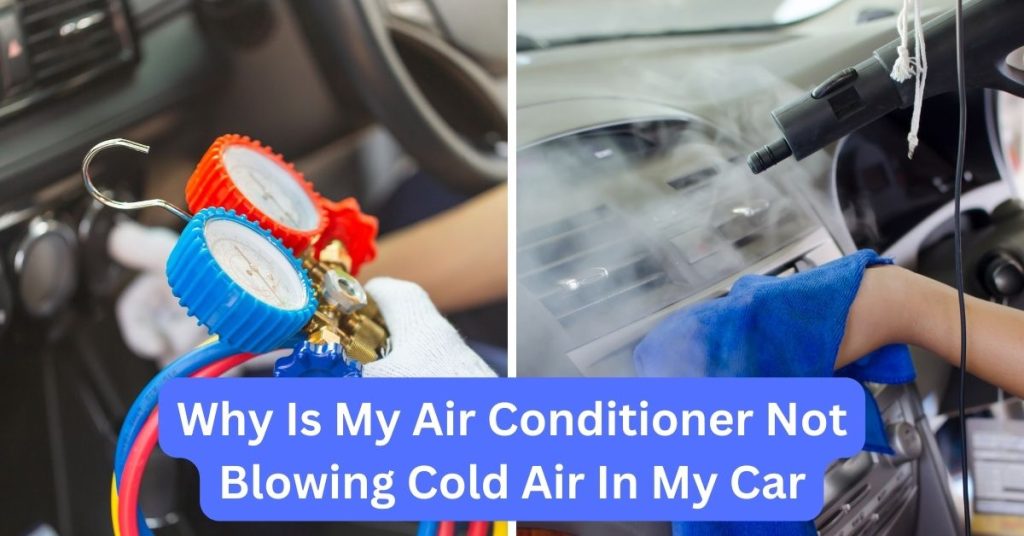Car Air Conditioner Not Blowing Cold Air

Troubleshooting a Car Air Conditioner That's Not Blowing Cold Air: A Guide for HVAC Professionals and Aspiring Technicians
A car air conditioner blowing warm air on a scorching summer day is a common complaint, but diagnosing the root cause requires a methodical approach. This article serves as a comprehensive guide for HVAC students, seasoned technicians, and employers looking to understand the nuances of automotive AC systems.
Understanding the Automotive AC System
Unlike residential or commercial HVAC systems, automotive AC systems are compact and subject to constant vibration, temperature fluctuations, and potential impacts. They operate on a similar principle – using refrigerant to absorb heat and expel it outside the vehicle – but with components tailored for mobile applications.
Key components include:
- Compressor: Driven by the engine, it circulates and compresses the refrigerant.
- Condenser: Located in front of the radiator, it dissipates heat from the refrigerant.
- Expansion Valve/Orifice Tube: Meters refrigerant flow into the evaporator.
- Evaporator: Located inside the dashboard, it absorbs heat from the cabin air.
- Refrigerant: The working fluid (typically R-134a or the newer R-1234yf) that carries heat.
- Receiver Drier/Accumulator: Filters refrigerant and removes moisture.
Common Causes of Warm Air
Several issues can prevent a car AC from blowing cold air. Here's a breakdown of the most common culprits:
- Low Refrigerant: The most frequent cause. Leaks, even small ones, can gradually deplete the refrigerant charge.
- Faulty Compressor: A failing compressor may not be able to adequately circulate refrigerant.
- Clogged Condenser: Debris obstructing airflow can reduce the condenser's ability to dissipate heat.
- Blocked Expansion Valve/Orifice Tube: Restrictions can limit refrigerant flow to the evaporator.
- Failed Expansion Valve: An expansion valve may fail to properly regulate refrigerent flow.
- Electrical Issues: Problems with wiring, fuses, relays, or sensors can prevent the system from operating correctly. This could include a faulty compressor clutch.
- Vacuum Leaks: Many older vehicles use vacuum to control blend doors and other HVAC functions; leaks can disrupt the system.
- Blend Door Problems: The blend door mixes hot and cold air. If it's stuck or misadjusted, it can result in warm air even when the AC is on.
Diagnostic Procedures for HVAC Technicians
A systematic approach is crucial for accurate diagnosis. Here's a step-by-step process:
- Visual Inspection: Check for obvious signs of damage, leaks, or debris. Inspect the compressor clutch for engagement.
- Gauge Manifold Test: Connect gauges to the high and low-pressure ports to assess refrigerant pressure. This is critical for determining if the system is properly charged and if the compressor is functioning.
- Leak Detection: Use a refrigerant leak detector to pinpoint any leaks in the system. Dye injection is another common method.
- Component Testing: Test the compressor, condenser fan, expansion valve, and other components to ensure they are functioning correctly. Use a multimeter to check for electrical continuity and voltage.
- Scan Tool Diagnostics: Many modern vehicles have HVAC control modules. Use a scan tool to check for diagnostic trouble codes (DTCs) that can provide clues to the problem.
- Temperature Measurements: Use a thermometer to measure the air temperature at the vents. Comparing the vent temperature to the ambient temperature can help assess the system's performance.
HVAC Career Paths and Certifications
A career in automotive HVAC offers diverse opportunities. Entry-level positions often involve assisting experienced technicians, while advanced roles require specialized knowledge and certifications.
Entry-Level Technician: Assists with basic repairs, maintenance, and diagnostics. On-the-job training is common. According to the Bureau of Labor Statistics (BLS), HVAC mechanics and installers earned a median annual salary of $59,620 in May 2023. The BLS projects about 17,000 openings for HVAC mechanics and installers each year, on average, over the decade from 2022 to 2032.
Experienced Technician: Performs complex diagnostics, repairs, and system overhauls. Often specializes in specific makes or models. Salary potential increases with experience and certifications.
Master Technician: Possesses advanced knowledge and skills. May lead a team of technicians or work as a diagnostic specialist. Requires extensive experience and certifications.
Service Manager: Oversees the service department, manages technicians, and interacts with customers. Requires strong leadership and communication skills.
Key certifications for automotive HVAC technicians include:
- EPA Section 608 Certification: Required for handling and purchasing refrigerants. There are different levels (Type I, Type II, Type III, and Universal) depending on the type of equipment serviced.
- NATE (North American Technician Excellence) Certification: While not specific to automotive, NATE certification demonstrates a high level of competency in HVAC principles.
- ASE (Automotive Service Excellence) Certifications: Several ASE certifications are relevant, including A7 (Heating and Air Conditioning).
- Manufacturer-Specific Certifications: Many automakers offer their own certification programs for their vehicles.
Real-World Example: Maria started as an entry-level technician, obtained her EPA 608 and ASE A7 certifications, and is now a lead technician at a dealership specializing in European vehicles. She regularly attends manufacturer-sponsored training to stay up-to-date on the latest technologies.
The Future of Automotive HVAC: Trends and Technologies
The automotive industry is undergoing rapid technological advancements, and HVAC systems are no exception. Electric vehicles (EVs) and hybrid vehicles present new challenges and opportunities for HVAC technicians.
Key trends include:
- R-1234yf Refrigerant: This refrigerant is replacing R-134a due to its lower global warming potential. Technicians need specialized training and equipment to service systems using R-1234yf.
- Electric Compressors: EVs use electric compressors powered by the vehicle's battery. These compressors require different diagnostic and repair procedures compared to traditional belt-driven compressors.
- Heat Pumps: Many EVs use heat pumps for heating and cooling, offering improved efficiency compared to traditional resistance heating.
- Integrated Thermal Management Systems: Modern vehicles often have integrated thermal management systems that control the temperature of the battery, motor, and cabin.
- Smart HVAC Systems: Advanced systems use sensors and algorithms to optimize cooling and heating based on occupancy, weather conditions, and driving habits.
Job Outlook and Salary Expectations: The demand for skilled automotive HVAC technicians is expected to remain strong as vehicles become more complex. According to industry reports, experienced technicians with specialized skills and certifications can earn salaries well above the national average.
Employers should invest in training and development programs to ensure their technicians are equipped to handle the latest technologies. Offering competitive salaries and benefits is also essential for attracting and retaining top talent.
Conclusion
Diagnosing and repairing a car AC system that's not blowing cold air requires a blend of technical knowledge, diagnostic skills, and attention to detail. By understanding the system's components, following a systematic diagnostic procedure, and staying up-to-date on the latest technologies, HVAC professionals can excel in this rewarding field. For employers, investing in skilled technicians is crucial for providing high-quality service and maintaining customer satisfaction. The future of automotive HVAC is bright, with ongoing advancements creating new opportunities for those who are willing to learn and adapt.










